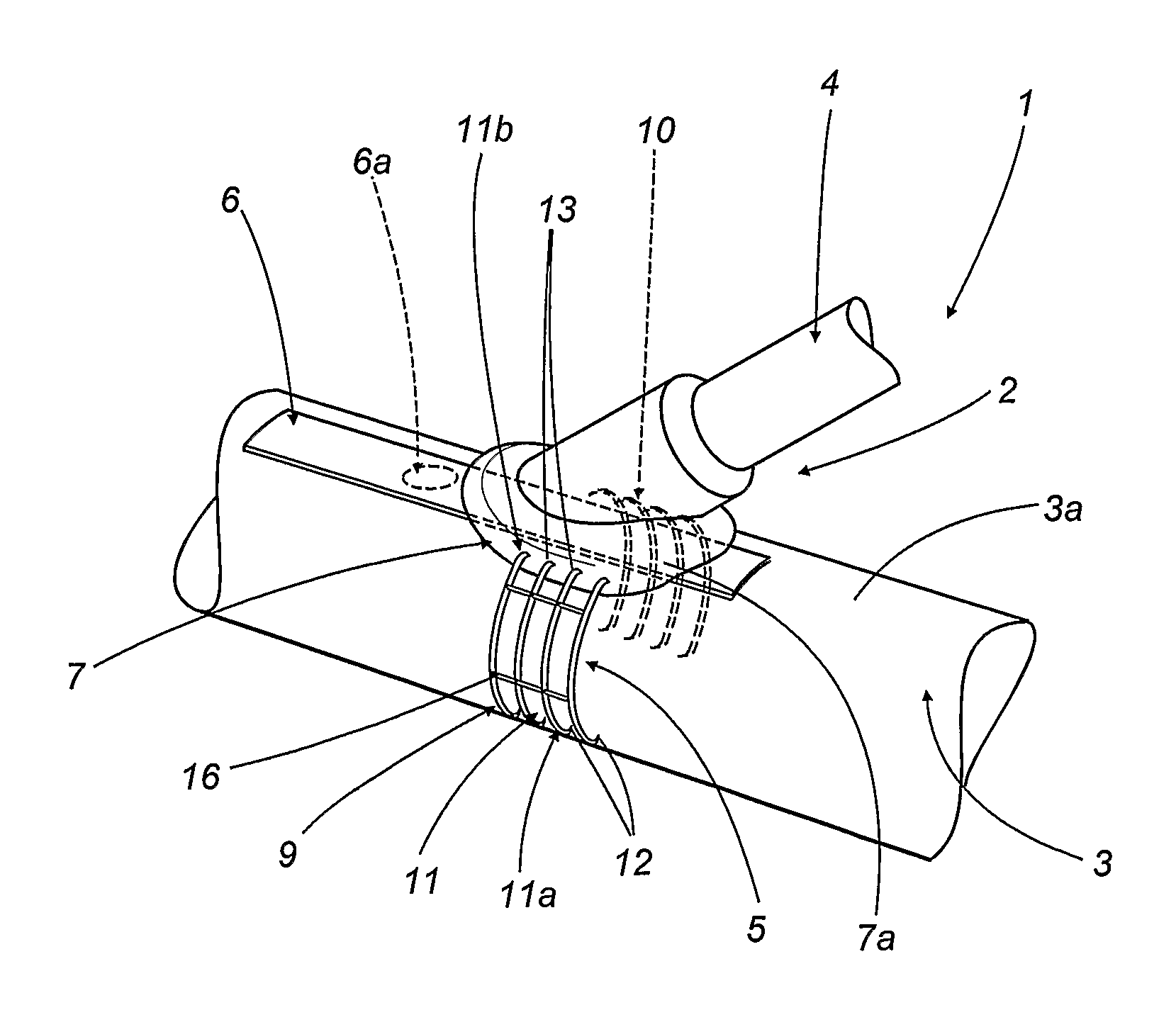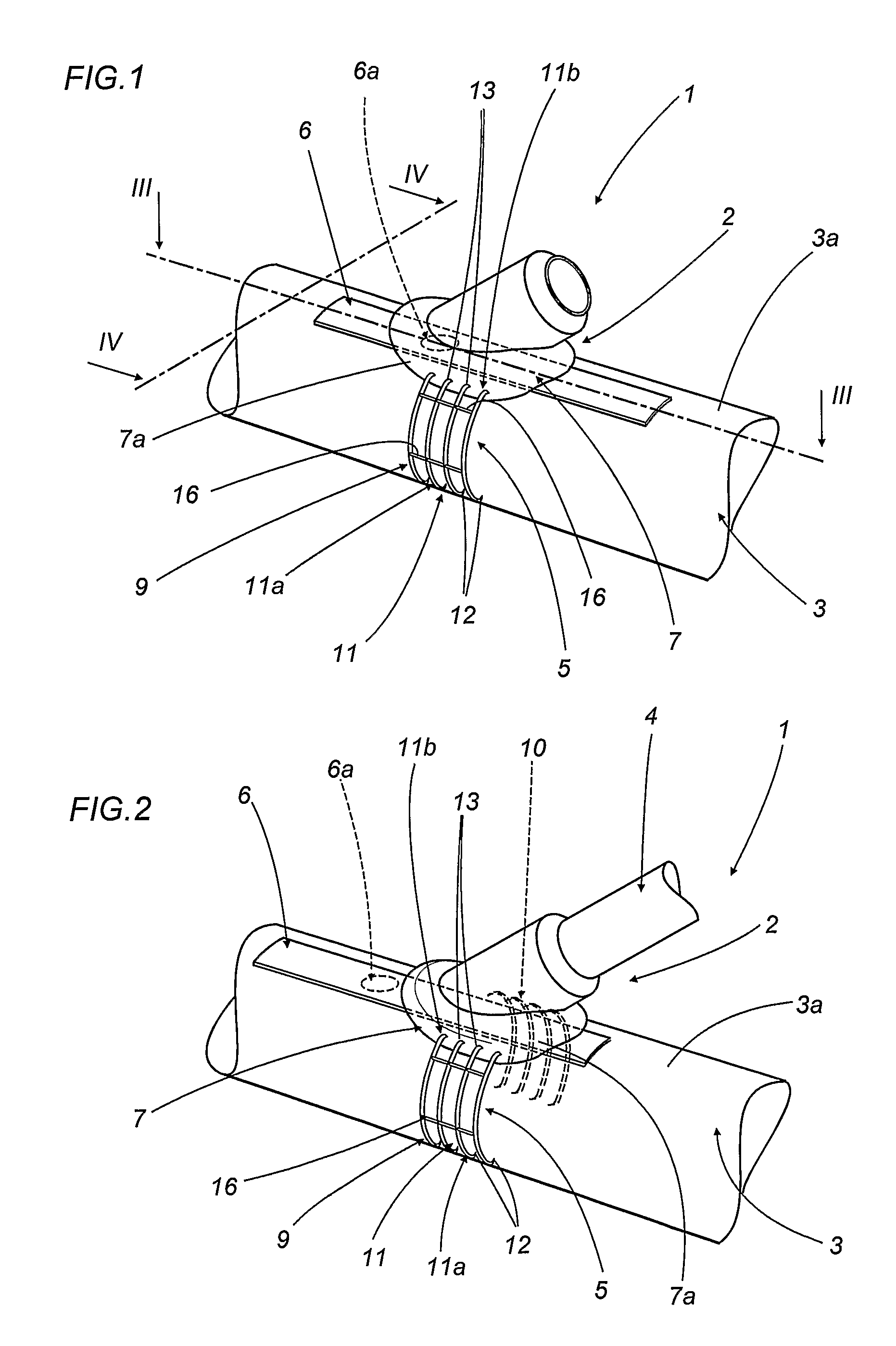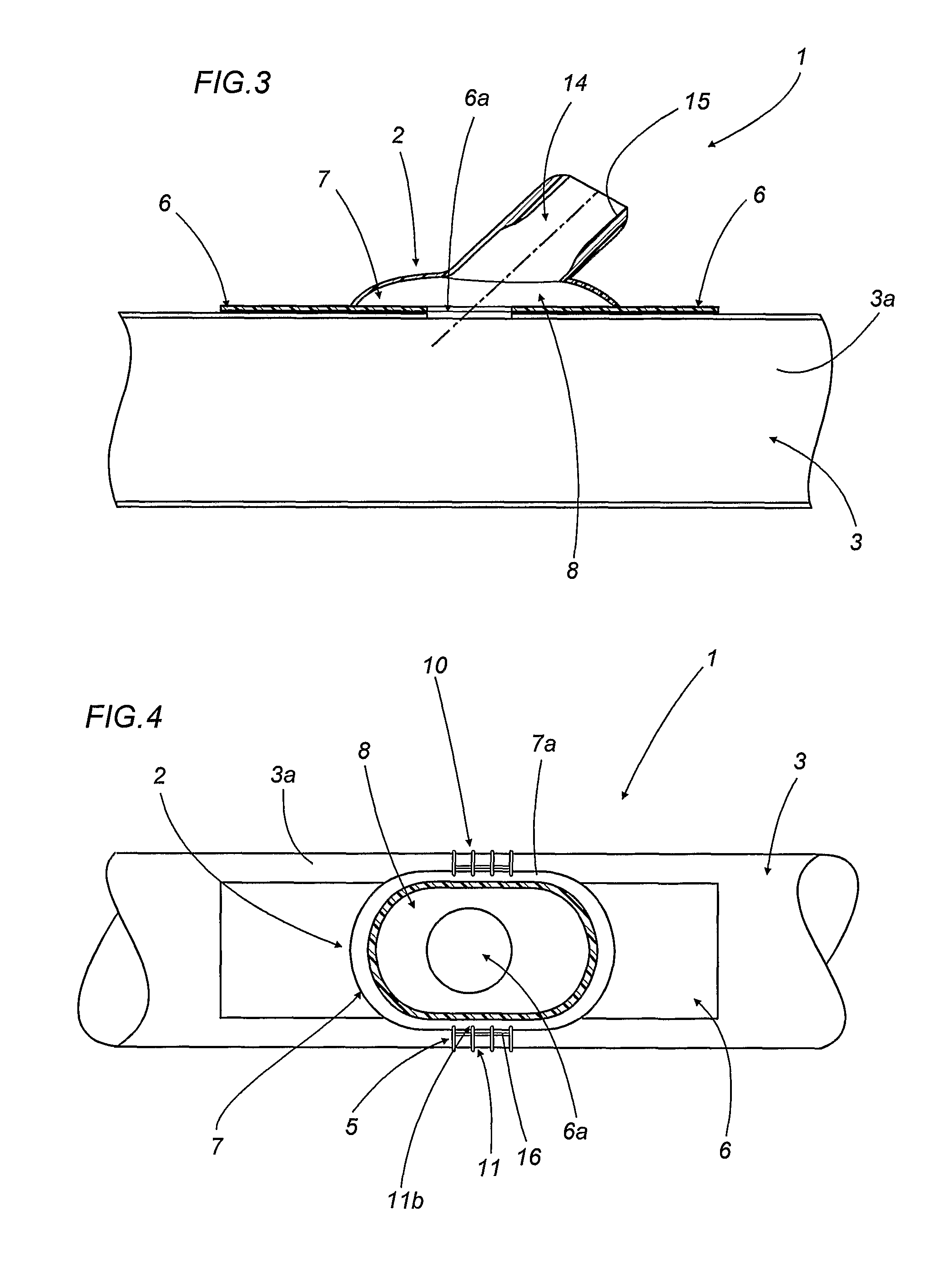Device for end-to-side anastomosis
a technology of end-to-side anastomosis and device, which is applied in the field of end-to-side anastomosis devices, can solve the problems of not perfectly restoring the original continuity of the vessel, the loss of learning time, so as to reduce the learning time, the effect of easy positioning and relatively short tim
- Summary
- Abstract
- Description
- Claims
- Application Information
AI Technical Summary
Benefits of technology
Problems solved by technology
Method used
Image
Examples
Embodiment Construction
[0045]With reference to the accompanying FIGS. 1 to 5, the number 1 indicates a device for end-to-side anastomosis according to this invention.
[0046]The device 1 comprises a coupling 2 that can be positioned on a wall 3a of a first duct 3. The coupling 2 can be connected to a second duct 4 so that the first 3 and second duct 4 can be placed in fluid communication with each other. The ducts 3, 4 can be blood vessels, lymph vessels or prosthetic ducts as necessary, that is to say according to the type of operation to be carried out. The device 1 also comprises means of restraint 5 for firmly and preferably removably attaching the coupling 2 to the first duct 3 and at least one membrane 6 removably positioned between the coupling 2 and the side wall 3a of the first duct 3, to prevent or allow fluid communication between the first 3 and the second 4 duct.
[0047]In particular, as can be seen in the accompanying figures, the coupling 2 comprises a saddle-shaped portion 7 at least partially...
PUM
 Login to View More
Login to View More Abstract
Description
Claims
Application Information
 Login to View More
Login to View More - R&D
- Intellectual Property
- Life Sciences
- Materials
- Tech Scout
- Unparalleled Data Quality
- Higher Quality Content
- 60% Fewer Hallucinations
Browse by: Latest US Patents, China's latest patents, Technical Efficacy Thesaurus, Application Domain, Technology Topic, Popular Technical Reports.
© 2025 PatSnap. All rights reserved.Legal|Privacy policy|Modern Slavery Act Transparency Statement|Sitemap|About US| Contact US: help@patsnap.com



